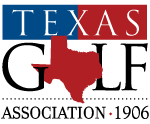Around the Green
The latest golf-related news, notes, and feature stories from the TGA.
UNDERSTANDING COURSE RATING
The Course Rating system is the backbone of the USGA Handicap System, yet many people are still confused by the numbers and how they are calculated. To summarize, the USGA Course Rating indicates the playing difficulty of a course for “scratch golfers” under normal course and weather conditions.
For instance, a Course Rating of 72.0 would portend that a scratch golfer would shoot 72 on that course. To help differentiate between a Course and Slope Rating, look at it this way: Course Rating views the course from a scratch golfer’s perspective; Slope Rating is from a bogey golfer’s viewpoint.
Golf course operators need to have a good understanding of Course Rating so they can answer members’ questions about how it’s used in calculating a handicap indexes, as well as making adjustments in a player’s handicap for a particular course. They also need to be aware of the different variables that influence a course’s rating and why courses need to be re-rated over time.
All courses rated under the USGA Course Rating System are rated using the same parameters established by the USGA. A male scratch player is defined by the USGA as an amateur golfer who has reached the stroke play portion of the U.S. Amateur Championship. On average, he hits his tee shot 230 yards in the air with 20 yards of roll. His second shot travels 200 yards in the air with 20 yards of roll. Again, these are the averages used by the USGA.
The male bogey golfer is defined as having a USGA handicap index of 17½-22½. By definition, he can hit his tee shot 180 yards in the air with 20 yards of roll. His second shot travels 150 yards in the air plus 20 yards of roll for a total distance of 170 yards. Therefore, the bogey golfer can reach a 370-yard hole in two shots, and a scratch golfer can reach a 470-yard hole in two shots.
When it comes to the rating process, there are five playing-length factors considered for each hole: roll, elevation, wind, dogleg/forced lay-ups and altitude. Between these five factors, or a combination of them, the overall playing length of a golf course is either lengthened or shortened from the physical yardage of a course to establish its “effective” playing length.
In addition to a course’s effective playing length, there are 10 obstacles evaluated on each hole (nine are physical and one psychological). The nine obstacles are as follows: topography, fairway, green target, rough and recoverability, bunkers, out-of-bounds/extreme rough, water, trees and green surface. If that weren’t enough, the hole is given an extra boost of difficulty under the obstacle of psychology if the rating numbers determine that the hole plays more difficult.
Each obstacle is given a numerical value ranging from 0-10 (0 being non-existent, 10 being extreme). To avoid subjectivity, the values assigned are taken from a table in the USGA Course Rating Guide. These values are based off of the distances the obstacle is from the center of the landing zone or target.
For example: Assuming there are no effective playing length corrections, the team of course raters would first evaluate the landing area for the bogey golfer 200 yards off the tee. In this area, the team would measure the width of the fairway, the distance from the center of the fairway to the nearest boundary line, trees, hazard line and whether there are any bunkers nearby. The same procedure would be done for the scratch player’s landing area 250 yards off the tee.
This evaluation process is repeated until the group reaches the green. The green width and depth are then measured as well as the amount of water and/or bunkers surrounding the green as well as how far it is to the nearest boundary line.
This process is repeated on every hole and for every tee. Through this data, the scratch and bogey ratings are achieved. The two different numbers are then used to calculate the slope number.
Because golf courses are such an integral – and seemingly unchanging – part of any club, it’s easy to forget that they are living, breathing things. They evolve over time. Trees are planted or succumb to disease and severe weather, bunkers are shifted or added to combat increases in driving distance and green complexes eventually shrink in size from changes in mowing patterns.
Similarly, advances in course conditioning can also change the way a course plays. Lower fairway grass height, healthier and uniform rough areas and faster green speeds are all now possible.
Due to the ever-changing nature of golf courses, the USGA requires all authorized golf associations to periodically review the ratings of their courses and to revise them if necessary. The USGA has licensed the TGA to rate courses according to their guidelines. If your club is a member of the TGA, you are required to comply with the guidelines that the USGA has set down for the TGA to follow.
The TGA is required to re-rate a golf course within a 10-year period. All newly constructed golf courses often change due to their maturity. Therefore, the TGA rates these courses 5 years after the initial rating.
If there have been any “significant changes” to your course, such as the size of the greens have changed, greenside or fairway bunkers have been added or removed, or a new set of tees have been added, your course may be in need of an adjustment. However, more than likely you are not in need of a full course rating. Many times the TGA can adjust the data and make these changes manually. These data changes can then be entered into the USGA Course Rating software to calculate an updated course rating and slope rating.
For a general overview of TGA Course Rating, click here. If you have any questions about USGA Course Rating or need to have your course rated/re-rated, please contact Kelly Kilgo, Senior Director of Membership Services & Course Rating, at (214) 468-8942.



